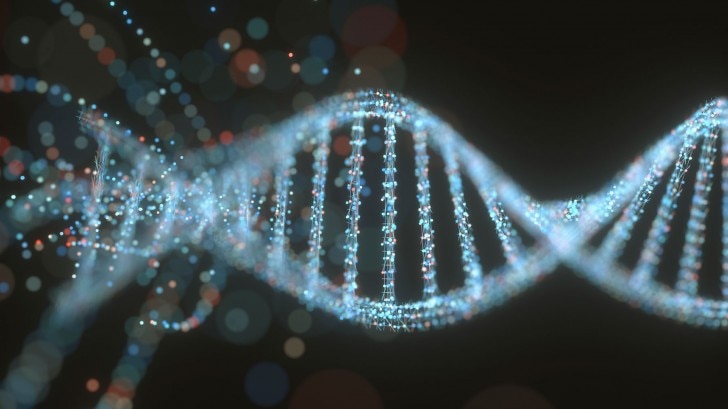BBC Earth newsletter
BBC Earth delivered direct to your inbox
Sign up to receive news, updates and exclusives from BBC Earth and related content from BBC Studios by email.
Genetics
The Hollywood stereotype of inbreeding would have you believe it is a surefire route to being a horror villain. But what physical effect can it have on humans and animals, and how did it historically play a part in securing power?
Inbreeding is the mating of organisms closely related by ancestry. It goes against the biological aim of mating, which is the shuffling of DNA. Human DNA is bundled into 23 pairs of chromosomes, within each chromosome there are hundreds of thousands of genes and what’s more, each gene has two copies known as alleles. Genes determine different aspects of your appearance, like hair and eye colour, as well as biological factors such as your blood type. These genes fall into two categories, dominant and recessive. If one of the genes in the pair is dominant, then the result is you gain the trait of the dominant gene. However, for traits that originate from the recessive gene, you need both genes to be recessive.
For example, the gene for brown eyes is dominant and so having just one of these in a pair will result in your eyes being brown. However, the gene for blue eyes is recessive so you’ll need both of them to get blue eyes. This is important as certain congenital defects and genetic diseases, such as cystic fibrosis, are carried by recessive alleles. Inbreeding stacks the odds of being born with such conditions against you. As blood-relative mating partners have similar DNA, the changes of them carrying the same recessive gene is greatly increased. According to a 2011 study, the rate of near natal and childhood death increases if the child comes from a first cousin union, nearly doubling in certain countries.

As inbreeding comes with such a high cost, the logic of engaging it might seem baffling. Historically, inbreeding didn’t just keep traits within a bloodline, it also kept power. In hereditary systems of rule, such as the pharaohs of Ancient Egypt, inbreeding prevented another family marrying in and lining up to take the throne. A 2015 study examined 259 adult Egyptian mummies and found that royal mummies had consistently different heights from the general population, with male royals being taller than average and female royals being shorter than average.
A more recent example is the House of Habsburg, whose empire included Spain, Austria and Hungary; the family line ending with Charles II of Spain, who was born in 1661. The family tree at this point had become quite jumbled - his mother was his dad’s niece and his grandmother was also his aunt. Charles suffered from numerous disabilities and congenital defects. He didn’t speak until he was four, couldn’t walk until he was eight and was barely able to chew due to his deformed jaw. His autopsy report is a staggering read. It states that after his death Charles had no blood, a heart the size of a peppercorn, corroded lungs, a head full of water, rotten and gangrenous intestines and had only a single testicle that was as black as coal. While not all of these can be blamed on inbreeding (pituitary hormone deficiency and distal renal tubular acidosis could explain several of these conditions) both are caused by recessive alleles. However, it is very rare to have both.
Humanity hasn’t just used inbreeding to retain regal status, it is also deployed in breeding animals. Mice used in lab experiments are often inbred, as the similar genetic structures enable experiments to be repeated. Controlling outcomes is also the motivation for inbreeding in the farming industry, with cows being bred to increase milk yields and sheep are careful selected to produce more wool.

There is evidence that suggests inbreeding certain animals can have more of a negative impact than a positive one. The two largest populations of koalas in Australia could cease to exist by just one disease, due to them being so so heavily inbred, scientists have warned. A study, headed by Dr David Balding, examined inbreeding in pedigree dogs. Like the animals bred for farming, particular traits are encouraged in pedigree dogs, including their height and the quality of their fur. The study found that a large proportion of pedigree dogs suffered from conditions caused by recessive alleles such as heart disease, deafness and abnormal development of their hip joints. The problem is more alarming than it might seem on the surface. 20,000 pedigree boxer dogs would have the generic variety of around 70 dogs.
Incest isn’t entirely down to human interference and is part of the lifecycle of some animals. The reproductive patterns of Pyemotes boylei, a type of mite, are built around inbreeding. The mother mite keeps her eggs inside her until they reach maturity and the first wave to hatch is male. This incestuous vanguard waits outside their mother’s genital opening and as soon as the females hatch, their brothers impregnate them. Charming…
A limited gene pool in a species can, unsurprisingly, have a negative impact. This is known as Inbreeding Depression and refers to a population decrease due to lack of healthy mates. The problem can have a simple solution. Adders in Sweden were isolated due to farms and suffered an increase in stillbirths and offspring suffering from congenital defects. New adders were added and their population flourished. This is called outbreeding, for obvious reasons, and while it seems to be the go-to solution, there is a catch. Endangered species such as the Black Robin (Petroica traversi) have such small populations that there is no stock to replenish the population.
Inbreeding; perhaps best left to the mites. While it won’t automatically turn anyone into a Hollywood-style serial killer, it does leave your offspring at a greater risk of a whole host of congenital defects and genetic diseases.
Featured image © Abhishek Saini, EyeEm | Getty